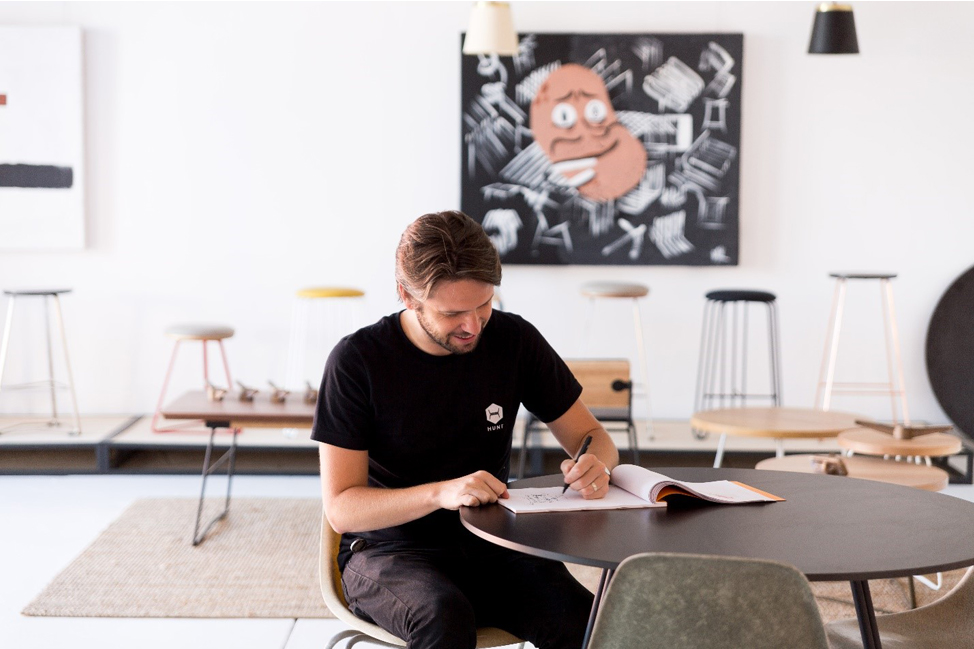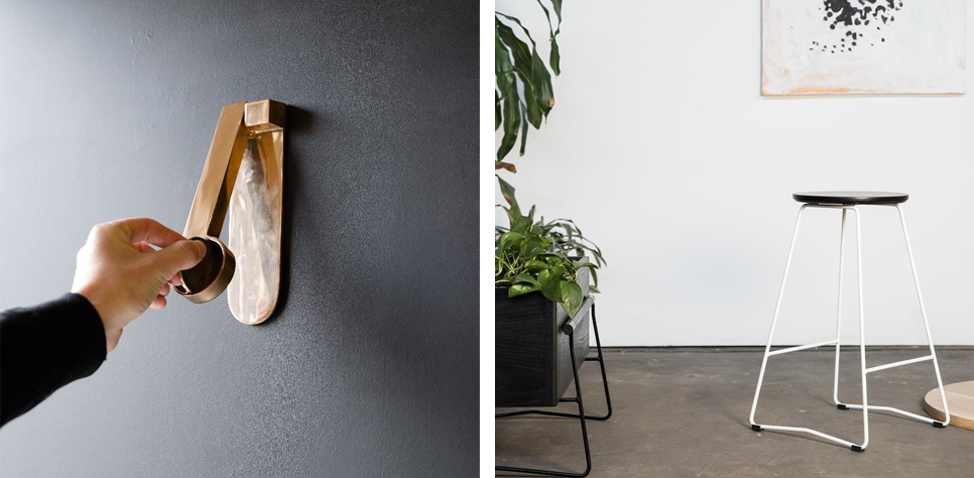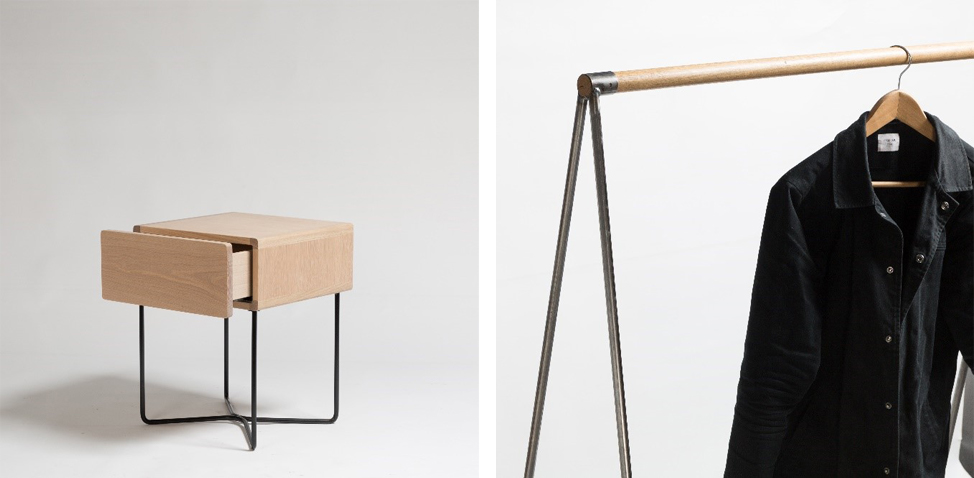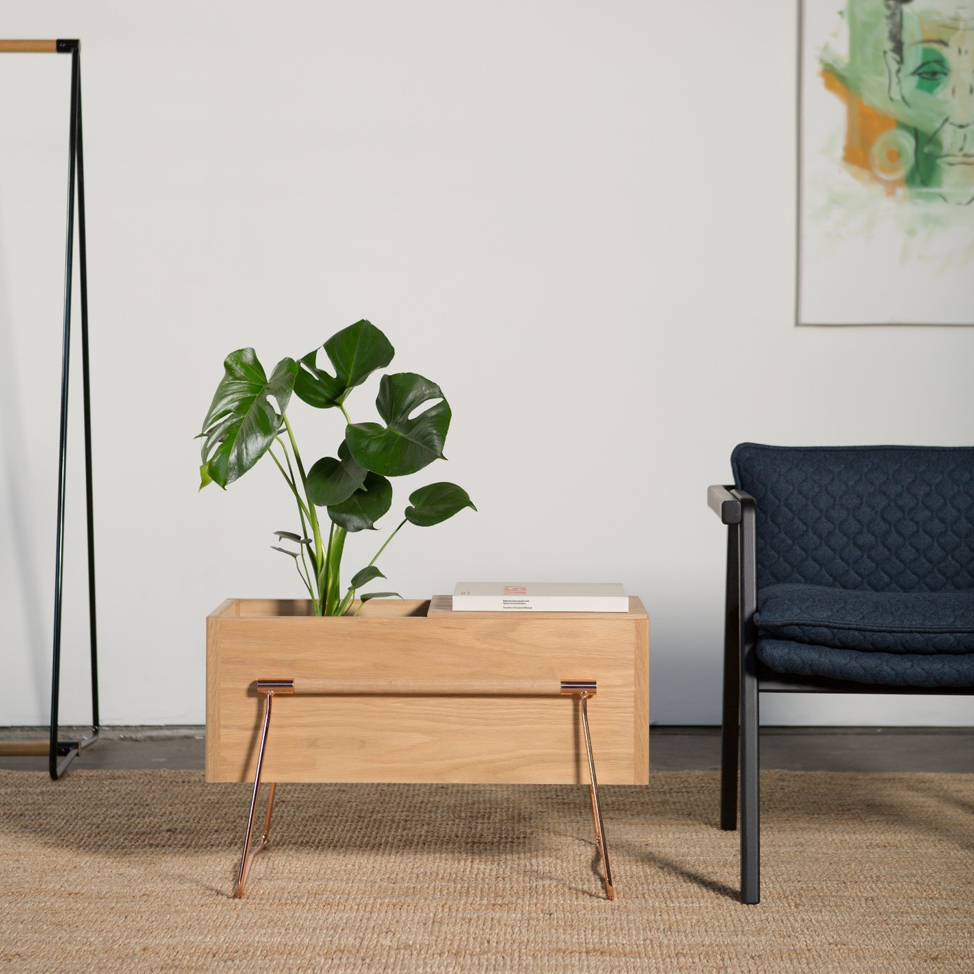28 February 2020

Max Hunt
Director & Designer, Hunt Furniture
Bachelor of Design (Product Innovation)
When Max graduated from what was then called the product innovation program at UniSA in 2011, he had hopes of practicing as an industrial designer. Things didn’t quite go to plan – but the success and ubiquity of Max’s business, Hunt Furniture, since its inception soon after graduation, speaks for itself.
“Initially I thought I’d be a pure industrial designer who designed a little furniture, but I ended up the other way around,” says Max. “I decided to continue to push through with self-initiated projects until something worked. Expect nothing but the unexpected.”
Though often dismissed in terms of career opportunities, Max sees South Australia as a prime destination for furniture design thanks to its long history of craftsmanship that has resulted in irreplaceable expertise.
It is true that South Australia has a rich history of local knowledge in furniture design and manufacturing. Many staples of the mid-century modern – for some the golden era of Australian design – were locally designed and made.
National players T.H Brown, Leo Conci and E.R Noblett all called Adelaide home. Small to medium generational manufacturers thrived, and demand for these pieces steadily grew. A fascination with this influential era in South Australian design persists – original modernist pieces that carry the T.H Brown or Noblett seal are a staple for vintage stores, second-hand sellers and collectors, and fetch a high price for their notoriety.
Since the collapse of the manufacturing sector, a gap between history and cultural knowledge has emerged. A catalogue essay that accompanied a 2018 exhibition at Adelaide’s JamFactory acknowledged the difficulty of tracking the industry’s development: “the furniture manufacturing industry has been overlooked in records of the State’s relatively short history since colonisation … information about furniture manufacturing in South Australia is scarce.”

In more recent history, local conditions have driven changes in the strategies used to produce pieces. New manufacturing techniques emerged, facilitating unique combinations of industry production and hand-finishing, and mirroring concurrent architectural developments in a melding of disciplines that would come to characterise 21st century design trends. In South Australia, these strategies have survived better than elsewhere.
“We have an amazing wealth of manufacturing knowledge right here and we are very competitively priced," says Max. “South Australia should be a destination for designers all over Australia to make their products.”
Hunt Furniture has operated for almost a decade on a philosophy of original design, local craftsmanship and collaboration. Born in the UK and immigrating to Australia as child, Max’s early interests in art and design led to his pursuing industrial design.
He began working at a furniture retailer, moving to an electrical drafting job after university and eventually moving on to manage Hunt Furniture full-time. These days, Max’s recognisably modern pieces are a feature of many local fit outs across Adelaide, as well as interstate and international applications.

Max cites influences far and wide, emphasising the importance of taking inspiration from outside of your discipline: “I can’t just focus on one part of design. I like it all … the big goal is to establish a multidisciplinary studio. Keep it interesting.”
Hunt Furniture is known for authentic, original design and affordable prices that reflect the craftsmanship of each piece. Much of the changing of the South Australian furniture manufacturing industry was set in motion long before Hunt Furniture came into its own, so Max’s goal is to build on the legacy and utilise the wealth of knowledge at his fingertips.
For many designers, finding a balance between high quality, authentic design and affordability presents a major challenge. When asked about the future of furniture design, Max points to Australia’s rising problem with imitation and replica products as the design industry’s major contemporary dilemma.
“It seems crazy that the laws around copyright and intellectual property that apply to a photographer or artist don’t apply to design … [corporations] should be held accountable for ripping off so many designers.”
Like so many other designers and makers, Max has felt the effects of the replica industry. Still known to some as the Hunt stool thanks to its success, the HS650 was inspired by the classic workshop stool found in sheds and studios across Australia. It was one of Hunt Furniture’s earliest successes and one that put the burgeoning brand on the map.
In 2015, after approaching Hunt Furniture at a design fair in Melbourne, a major retailer released a near-exact replica of the HS650 for a fraction of the cost. Sales of the original product quickly tapered off, and Max was informed by legal aid that his design was not covered by intellectual property law.

It’s unfortunately a story that is all too familiar for designers, sellers and makers across Australia. In 2010, discontent with the state of Australian intellection property law led to the creation of the Authentic Design Alliance, an organisation that has campaigned heavily against the practice with a renewed focus in the last few years.
Despite a growing trend towards ethical and local consumption in some parts of the community in recent years, Max says this shift is not being felt at the base level that needs it most, and government response remains minimal.
“There needs to be a change in the law … if we can’t change the protection for designers, price always wins. Not many people want to buy something for $300 from a designer if people mistake it for a $25 stool from Kmart.”
With this in mind, Max’s advice for new students, recent graduates, and emerging creatives wondering how to navigate the minefield is simple but clear.
“Start designing and making and the rest will fall into place. Don’t quit your day job if you don’t have to. Build things people want. Learn new ideas. Pay yourself first. Be obsessed."
"Be authentic.”
For more info about how tertiary study in product and industrial design at the University of South Australia can lead to a range of careers across design disciplines, visit the website here.



